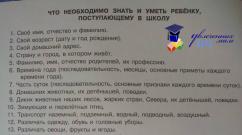The history of knightly armor. Medieval armor in western Europe
There are places where history buffs cannot be dragged by the ears.
One of them is the Arsenal in Graz (Austria).
This is one of the largest, and perhaps the largest in the world, collection of edged weapons and armor - despite the fact that Austria itself is not at all distinguished in size.
Arsenal in Graz - "Landeszeughaus" - is not just a museum.
This is exactly the warehouse where combat, ceremonial, tournament armor and weapons are stored. In the old days, 16 thousand soldiers could arm themselves here at a time.
Times were turbulent then - the Ottoman Empire was striving for world domination. Graz is located at the foot of the Alps, and in fact, became the main obstacle on the way of the Turks to the Danube Valley. And that means to Central Europe.
There were several such arsenals as in Graz. All of them faithfully served the townspeople, but time passed, and it was decided to centralize the defense of the Austrian lands. In 1749, Empress Maria Theresia ordered to leave only one arsenal of all - Gracevsky.
So we can say thank you very much to her for that.
Although we must thank not her, but actually the inhabitants of Styria - the land in which Graz is located. It was they who were able to convince the empress to save useful structure as a monument reminding of the bravery of their ancestors in the fight against the "eternal enemy of Christianity."

In total, the Arsenal contains about 32 thousand exhibits of the late 15th - early 19th centuries!

I don't know about you, but personally to me from Arsenal in Graz it reminds me of a repository of terminators ...
Arsenal today
Now let's take a walk through the museum. Virtually so far, but who knows if someday you will do it with your own feet? 😉
So, all four floors of the building are divided by original wooden ceilings. It is believed that it is wood, or rather the wooden floors and walls of the arsenal, that absorb moisture and prevent iron from rusting.
Below is the vaulted cannon hall.

The first floor is dedicated to everything that accelerated the rejection - a heavy flintlock and a pistol, as well as more modern types of firearms.

Here is another old gun - from a different angle, already in a very close-up:

How exactly all this fired, you cannot immediately understand. And yet, loading an old gun is a whole science! There was no scent of modern rate of fire at that time, the process of preparing for firing was more like lighting a pipe.
The firing mechanism itself - the "lock" shown in the photo, is somewhat different from that in the video, but that's okay. Somehow, something like this, it was:
Knight's helmet arme and king heinrich
On the second and third floors of the Arsenal, you can see in detail the armor and, which are medieval during tournaments and hostilities. And not only knights.

In the photo - knightly, which is called arme. At one time, this helmet was very popular, and even when more comfortable models changed it during the war, it was still worn for tournaments as one of the most reliable.
At first glance, it is difficult to understand how they put it on the knight's head, or rather, how the knight poked his head through the narrow neck. But, in fact, the arme, like the chest, opened simply. I have prepared a video for you on this very topic:
As you can see, Arme is really a very reliable helmet. But even he did not give one hundred percent guarantee of life.
Take, for example, the incident that took place in July 1559. The French king Henry II gave his daughter Elizabeth to the ruler of Spain, Philip of Valois. In honor of this event, a three-day knightly tournament was held.
On the evening of the second day, the bride's father, King Henry, was to fight the Earl of Montgomery. The opponents dispersed, there was a blow, then the crunch of breaking spears and ...
King Henry went limp in the saddle. The debris passed through the viewing slot of the royal arm and stuck into his eye.
The king died a few days later. Soon after, someone remembered the prediction of a certain Nostradamus, then still unknown:
"The young lion will surpass the old,
On the battlefield in a single duel
Striking his eyes in golden cage,
Which will lead the old lion to a painful death "
With this quatrain, his glory began, although Nostradamus himself repeated more than once that he did not mean the late King Henry at all ...
Medieval knights. The truth about armor

How comfortable was such equipment in battle?
Is it true that the knight who fell on his back could not continue the battle?
Was the knight's helmet really so heavy that the head could barely hold it?
Especially for you - field trials of full knightly armor. Dimensions, weight, thickness of armor - everything is observed exactly.
This means that everything that these French lads do could be repeated and medieval knights while wearing full armor:
Horse armor
Medieval knights are gentlemen not only in armor, but also on horseback.
And what knight's horse - without special, equestrian, armor?
There are several horse suits on display in the halls of the Arsenal, and here is one of them.

In fact, horse armor, like human armor, consists of many very different elements. Each of them has its own name:

The iron breastplate is also called "peitel", and the headpiece is called "champhron". It could be supplemented with a special lattice, which made it possible to protect the eyes:

By the way, for tournaments and war they used not only different armor, but also different horses.
The tournament knight had to be tall and heavy. His whole task is to jerk off, reach the maximum speed as quickly as possible and give his rider the opportunity to ram the enemy with a spear.

It is clear that if such a horse were in the war, it would not last long. It required endurance, mobility and the ability not to be afraid of battle. And a horse with all this was also very expensive.
It's like in our modern life, where the place of the horse was taken by the "cool car". You can see expensive foreign cars in traffic jams, the same Lexus or the same Infinity, but never a Formula 1 car!
Now let's have a taste of which the museum is also rich in.
Halberd - ceremonial and combat.
The halberd is a cross between a spear, an ax and a boat hook. Filmmakers often present them to the guards who watch the king's peace. Among her ancestors was one of the most terrible types of medieval weapons.
There is more than one halberd in the Graz Arsenal, and there are completely different specimens.
For example decorative. Beautiful, delicate, but in a battle with them it will not be too comfortable - the slotted decor weakens the structure:

There is also such a halberd, decorated with a pattern:

To be honest, such a beauty is not a warrior's dream either - the hook structure is weakened by a number of holes. But decorative is enough. The halberd is, first of all, a weapon and its place among warriors:

Well, we will digress from the halberd and turn our eyes to other types of long-tree weapons, which are presented in the Graz Arsenal.
Line Arguments - protazan and glaive
In general, medieval thought was inexhaustible for the beautiful and deadly.
In the next photo, the weapon is also decorated, but its construction is strong and reliable. Before us are veterans. The shaft of each of them is covered with metal stripes extending from the tip - specifically, to protect against being chopped off by the enemy.

Imagine the first row closest to us. From left to right - two protazans, a glaive and a spearhead.
The fighting age of the protazan was relatively short-lived. Protazan appeared in the 16th century, and a century later it degenerated into an attribute of the palace guard.
Now about the third sample from the left, the glaive. A glaive is such a large knife on a shaft, reaching 40-60 cm in length and 5-7 cm in width.
She served as a weapon of the Burgundians, and proved to be excellent as a combat weapon, with the help of which a detachment of soldiers could stop the enemy's horse attack. Like the halberd and the protazan, the glaive was at one time a weapon of the palace guards, and then sank into oblivion.
The army fighting with all this wealth could look something like this (note the pikes of the warriors - the shape of their tips is the same as in the photo from the Arsenal) 🙂

The two-handed sword "flamberg" and its brothers
There are quite a few two-handed swords in the Graz Arsenal. Many of them have a wavy blade:

The very word "flamberg" (translated from German as flame) clearly speaks of the appearance of the sword. To some, his wavy blade reminded a tongue of flame, and since then it has been the custom. But not everyone two-handed sword this is a flamberg - it all depends on the appearance of the blade itself.
For some reason, it is believed that a two-handed sword is some incredibly heavy thing, close in weight to a railroad rail. Indeed, the sword is very long, and could well reach human height. But weight is different.
We live in a three-dimensional space, where, in addition to length, there is also width and thickness. So the two-handed sword could not boast of them.
Imagine having to file bread with a file. This is inconvenient; a thinner tool is needed to cut bread. For cutting the body - too. Therefore, a two-handed sword had a very thin blade, and, for example, in the 15th century weighed 3-5 kilograms, depending on its length.
Flamberg two-handed sword from Styria (late 16th century).
The parameters of some two-handed swords are given in the article "The Weighty Issue of Two-Handed Greatswords", which was written by far from the last weapon connoisseur John Clements. I ranked them by weight, from lightest to heaviest:
- Germany, 1475-1525
Sword length 1382 mm, blade length 1055 mm, weight 1550 g. - Sweden, 1658
Sword length 1010 mm, blade length 862 mm, weight: 1735 g. - Germany (Solingen), early. 17th century.
Sword length 1350 mm, blade length 961 mm, weight: 3010 g. - Ceremonial sword. Germany, late 16th century
Sword length 1817 mm, blade length 1240 mm, weight 3970 g. - Germany, late 16th century.
Sword length 1790 mm, blade length 1250 mm, weight 4630 g.
And here I recall the story of one two-handed sword, which you will certainly be told in the museum in the Dutch city of Leeuwarden. Right next to the display case where it is stored. Its length is 215 cm and its weight is 6.6 kg.
It turns out that this two-handed sword was a ceremonial, so-called "outward" sword (it was put on display on special occasions). But one day it was taken over by a former farmer turned rebel and pirate, Pierre Gerlofs Donia. Local residents still revered him as a fighter for independence. So this one folk hero took a gigantic two-handed sword as a trophy and used it in battle. One can only guess what monstrous dimensions this Pierre Gerlofs Donia was, who went down in history as "Big Peter".
I will definitely return to the topic of two-handed swords in one of the articles of the cycle and will reveal it in more detail. So stay tuned to the site.
Long sword and one-handed
In addition to two-handed swords, there are also more modest examples in the Graz Arsenal. Many of them are typical, intended for use by ordinary cannon fodder.
But there are some very wonderful ones, dear ones. How do you like this pattern on the blade?

The camera zooms out and we see a wonderful long sword against the background of probably hundreds of simpler swords:

Like a commander in expensive gilded armor against the background of his army!
Battle drums
And the exposition of the Arsenal ends on the fourth floor, where musical instruments of military bands are presented. For example, these are the drums.

Well, once the exposition is over, let me introduce you to one interesting person.
Meet Thomas Storm, director of the Arsenal Restoration Workshop. This is a person who has round-the-clock access to all the exhibits of the Gracev Arsenal. Much of what we saw in the photo today passed through his hands. I'm sure many readers of this article would like to be in his place.

Photo taken from the museum's Facebook page
First, how do you like the name of the city - Graz? It is clearly foreign to the Germanic languages. Frankfurt, Berlin, Salzburg, Basel. It still sounds normal. But Graz ... Somehow does not fit, right?
And rightly so. The city was founded by the Slovenes. These are the inhabitants of the disintegrated Yugoslavia, one of the Slavic peoples. However, at a time when the Gracevsky Arsenal had not yet become a museum, there was no talk of any Yugoslavia. And the city was simply called a city - in Slovenian it sounds like Hradec. So they still call him, despite the official name.

To this day, many Slovenes live in Graz, and it is less than an hour by car to Maribor, one of the largest cities in the now independent Republic of Slovenia.
And further. Do you know that it was in Graz that Arnold Schwarzenegger began to engage in bodybuilding? He lived in the nearby village of Tal and traveled to town on a bicycle to train. Only he was swinging a barbell, and not two-handed sword.
Answer
The exposure is crazy!
But to photograph there, if I do not confuse anything, unfortunately it is impossible. Although I may be wrong, and the policy of the museum is to change. In any case, stay with us, subscribe to VKontakte or Facebook, because there are many interesting things ahead))
Answer
I photographed without any problem. In my opinion, I didn't even pay anything.
In general, the museum is unique!
It is a must-see there !!! I was in Graz 3 times. And every time I go there again. The feeling that this is exactly what "TOUCH TO HISTORY" should be.
... shelves with weapons, armor ... not piece exhibits, but a whole ARSENAL ... exactly as it was (in my mind) several centuries ago.
It's like looking at one soldier and seeing whole regiments ...
Answer
And also a monument to Schwarzenegger was erected in Graz. Interestingly, does he also have a little Slavic blood in him, since he is from a place where the Slavic diaspora was originally strong?
Answer
Network material.
"Here are the approximate figures for the weight of armor and weapons in the Middle Ages: a typical armor of the 15th century weighed about 52 pounds, that is, approximately 23.6 kg. If we take individual parts, then the helmet-armé (full closed helmet) weighed from 6" -7 "8 "(2.7-3.4 kg), gorget (collar) - 9 ounces (0.25 kg), breastplate from the dorsal and chest parts - 12" 8 "(5.7 kg)," skirt "at the bottom of the cuirass - 1" 11 "(0.76 kg) , right brace - 2 "14" (1.3 kg), left brace - 2 "9" (1.16 kg), "legs" - 6 "1" (2.74 kg) each, ringed shirt with short sleeves - 15 "7" ( 7 kg), long-sleeved - 20 "11" (9.38 kg), typical long sword - 2 "8" (1.13 kg).
The daily marching load of an infantryman from the Napoleonic Wars to the present day ranges from 60 to 70 pounds, that is, between 27 and 32 kg. And this weight is distributed much less conveniently than the armor of a medieval knight.
Just as a shock-absorbing hat was worn under a helmet, so under chain mail, and then under armor, the knights put on a quilted jacket (sewn from 8-30 layers of canvas) called "gambeson". Her shoulders and chest were lined with cotton wool.

The noticeable relief of the shoulders and chest made the proper impression on the ladies, but this was not the goal of resourceful knights. These “cushions” were designed to distribute the weight of the armor and absorb impacts. The multi-layered matter could also stop the smashing blow already weakened by the iron armor.
A pillow on the chest also served to increase the level of protection. If it was difficult, but it was possible to cut a silk scarf in the air with a saber, then no damask steel could cut the pillow with one blow, even on the block. As an arguing example, let us recall the stories of veterans of the Great Patriotic War. A regular soldier's quilted jacket stopped a bullet of German submachine guns from 200 meters!
So the prestigious suit of the 15th century (a puffed doublet jacket with bolsters on the shoulders, with narrow sleeves, as well as stocking-like trousers, a flattened pill headdress, shoes without heels, but with long toes - and all this flashy colors) - not an absurd fashion, but a chic military style. And what about the trousers different color- so this was not visible under the armor ...
In the 7th century, stirrups became widespread, allowing riders to use powerful horses, long spears and heavy axes - without a stirrup, it was almost impossible to sit on a horse, swinging an ax. The stirrups that appeared sharply strengthened the cavalry. But the replacement of peasant militias with real knightly cavalry did not happen overnight. Only in the 9th century, during the era of Charlemagne, the knights became the main force on the battlefield. What were these knights?
Warriors always had to use the weapons that modern and tribal artisans could make. Charlemagne, the creator of a huge empire, a commander, whose name has become a household name, lived in a wooden tower and wore a homespun linen shirt. And not because of the desire to be closer to the people, but because of the lack of choice. There were no architects or dyers in his state. And there were not many blacksmiths either ... For these reasons, the shells of the first European knights were still leather. Basically, anyway.
The cuirass (part of the shell that covers the body, but does not protect the neck and arms), made of several layers of cowhide boiled in oil and glued together, weighed more than 4 kg, and full armor (cuirass, legguards, leggings, spaulders, bracers), made according to this technology - about 15 kg. The multi-layered leather held arrows from a bow well, but pierced with arrows from a crossbow from a distance of up to 100 meters. Moreover, this armor could be pierced with a strong blow of a spear or sword. And he practically did not at all protect from clubs and axes.

The positive features of the leather carapace are its availability and lightness (in comparison with the metal one). But in general, he often did not justify himself - the level of protection bestowed on him did not pay off the decrease in mobility. Therefore, leather armor was rarely used in the infantry. On the other hand, the equestrian warriors, less concerned with high mobility, did not neglect it. Although even then - only in the absence of an alternative.
Increasing the level of protection of leather armor, as a rule, was achieved by attaching plates of soft iron to it. If there was one plate, it protected the heart. Several plates could completely cover the chest and abdomen.
The thickness of the metal in the plates was only about a millimeter. As the thickness was increased, the armor became too heavy. In addition, the increase in thickness still did not allow the iron of the plates to sustain direct blows: it was pushed through and made its way due to the imperfection of medieval technology. So the reinforcement of the leather armor plates increased its weight by only 2-3 kg.
Certainly, best result could be achieved by strengthening leather armor hard steel, but the thin plates of it would be brittle and would not be useful. Therefore, an alternative to the use of wide iron plates was fastening to the skin a large number small - a few centimeters across - steel plates. They helped little from arrows and spear blows, but, being solid, they effectively prevented the cutting of armor.
Chain mail
An alternative to leather armor was a hawberk, which was a chain mail with sleeves and a hood, complemented by additional chain mail stockings.

To make chain mail from iron wire about a millimeter thick, many rings were wound, each about a centimeter in diameter.
Outwardly, the hawberk looked quite solid: the armor completely covered the body, weighed relatively little (about 10 kg; with stockings and a hood - more), almost did not restrict movement. However, the hawberk gave a very dubious defense. The then technology made it possible to pull wire only from the softest and most malleable iron (rings made of hard steel broke and gave more worst defense). Chain armor was easily cut with a saber, pierced with a spear and cut with an ax. The flexible chain mail did not protect at all from a club or a mace. Only against relatively light swords, used until the 14th century, did chain mail provide satisfactory protection.

Chain armor was almost useless against arrows: faceted tips passed into the ring cell. Even at a distance of 50 meters, the warrior could not feel safe when fired by heavy arrows from powerful bows.
Chain mail was one of the easiest types of metal armor to make - and this is its main advantage. Hawberk's production required only a few kilograms of the cheapest iron. Of course, a wire drawing device was indispensable.
Bekhterets and brigantine
Mail Armor for a long time were used in parallel with leather, in the 11th century they began to prevail, and in the 13th century they finally pushed the skin into the background. When chain mail became available to most knights, a leather cuirass with iron plates sewn onto it began to be worn over a chain mail shirt. This achieved a higher level of protection against arrows. The total weight of the protective equipment increased and reached 18 kg.
Considering that even such (triple!) Protection could be easily penetrated by both an ax and a cavalry spear, the large weight of the kit was clearly unjustified.
In addition, the progress of blacksmithing allowed the knights in the 14th century to replace swords of the Carolingian style with twice as heavy and one and a half times longer rittershverts. The chain mail was no longer suitable against one and a half-handed swords.
The optimal ratio of weight to the level of protection would have a solid metal plate 1.2-2 mm thick, but such an element of iron armor could only be made by welding. Technologies like these were not available.
In order to forge a flat blade from three strips of metal, great skill was already required. A three-dimensional object (helmet or cuirass) is incomparably more difficult to make with one forging. Sometimes the craftsmen managed to make a cuirass from several elements that were connected to each other. But such a product was a literal work of art, and was an exception to general rule... Moreover, there were few skilled artisans. In Western Europe until the 11th century, there were no big cities, and, therefore, were limited to trade, stone construction, complex crafts.
Craftsmen capable of forging a large and reliable armor element (especially a curvilinear one) from several layers of metal did not exist in Europe until the 14th century. Therefore, all parts of the armor were assembled from flat and small elements.
In the simplest case, about 1,500 small welded flakes were connected by chain mail rings. The armor braided in this way (by analogy with ancient Roman it was called "lamellar") in Russian was called "bekhterets", resembled scales and had some flexibility.

Bekhterets covered the chest, back and hips of the fighter. With a weight of 12 kg, it withstood the chopping blows of the rittershvert, but did not save from the blows of a spear, ax and club. Therefore, the next step in the development of the protection of the warrior was the brigantine, which was widespread since the middle of the 14th century.

It still used flat armor elements, but there were only 30-40 of them. The plates were not connected to each other, but were inserted into the pockets of the fabric jacket, forming noticeable gaps. The disadvantage of the brigantine was the great mobility of the plates relative to each other. The plate distributed the blow of the club over the surface of the armor, but ultimately it usually fell on the ribs of the person. And the enemy blade could slip into the gap between the plates. An arrow could also have got there. As for the spear, the plates themselves diverged under the pressure of the tip.
In general, the brigantine significantly increased protection, but was mainly used only on top of the hawberk, adding its 10 kg to its already considerable weight.
Lamellar armor
In the 15th century, the quality of brigantine improved. The plates acquired a trapezoidal shape and began to fit tightly to the figure. Sometimes the plates even overlapped each other, providing improved protection. The number of plates in the armor increased to 100-200, and then to 500 pieces. But all this, of course, was half measures. Only large, voluminous, solid-forged parts could provide real protection.
Back in the 13th century in Europe, chain mail was sometimes reinforced with extensive shoulder and chest plates (when the warrior, the owner of the armor, was allowed to do so). In addition to breastplates and pauldrons, bracers, leggings, legguards and other elements were made of solid metal. Most often, solid armor elements were supplemented with chain mail or leather fragments. The benefits of hard booking were recognized early in Europe. The craftsmen did not stop embodying new ideas until they brought the principle to its logical conclusion, making the armor really solid. From now on, it was articulated from separate parts and covered the entire body.

Most knights now wished to have such and only such armor. This was also due to the tactics of the knightly cavalry. The heavy cavalry attacked in close formation several rows deep. At the same time, the king often considered it important to be in the first row. Indeed, according to European tradition, representatives of the wealthiest class - the highest aristocracy - not only personally participated in battles, but, in the absence of them, had to fight in tournaments every year. And what will happen to the commander, riding a dashing horse in front, if he is knocked out of the saddle? The rider will crash right under the feet of the horse of his own squire, and compared to the blow of a shod hoof, any club is a trifle!
Full articulated armor not only provided a high level of protection in hand-to-hand combat... Most importantly, they performed the function of a kind of exoskeleton (similar to the natural shell of beetles), and thereby sharply increased the survivability of a soldier dismounted during a cavalry battle.
The first "classic" plate knightly armor appeared in the 13th century. But at that time they were available only to kings. And that is not for everyone, but only for the wealthiest! From the beginning of the 14th century full armament Kings of average wealth and many dukes could already afford, and in the 15th century this pleasure became available to the broad masses of knights.
Solid armor of the 15th century was guaranteed to protect against arrows fired from a bow from any distance. At a distance of 25-30 meters, the armor withstood crossbow bolts and arquebus bullets. They did not penetrate with darts, spears and swords (except for two-handed ones), and reliably protected from blows. They could only be pierced with heavy slashing weapons (preferably two-handed).
Unfortunately, such armor also had drawbacks, of which the most significant (in the literal sense) was the load on the warrior. The articulated carapace weighed about 25 kg. If chain mail was worn under it, which was generally accepted until the end of the 15th century, then the total mass of protective equipment reached 32 kilograms!
A warrior chained in such heavy armor, was significantly limited in mobility. In individual foot combat, armor rather hindered than helped, because one passive defense cannot achieve victory. Well, and to attack the enemy, one must not yield to him in mobility. A meeting with a lightly armed enemy with a long weapon of great penetrating power did not bode well for the knight on foot. Preparing to take battle on foot, the knights removed their protection, at least from their feet.
Helmets
The helmet represents the most responsible and important element reservations: having lost an arm, you can still sit in the saddle, but having lost your head ... Therefore, the latest inventions were used, first of all, in the manufacture of helmets. V early middle ages helmets were made using the same technologies as reinforced leather shells. Such a headdress was either a cap made of a shock-absorbing substrate and several layers of leather, trimmed with strips of iron, or the same cap with steel plates fixed to it. Such helmets did not stand up to criticism. The chain mail hoods were a little more useful.
Nevertheless, it was the hoods of the hawberkas that for a long time performed the functions of helmets in Europe. Before the revival of urban civilization, trade and craft, only a small part of the soldiers could afford all-metal helmets. For the bulk of the knights, they became available only at the beginning of the 14th century, and for foot soldiers - only at the end of the same century. In the middle of the 14th century, the famous Genoese crossbowmen were dressed in hobers and brigantines, but still did not have helmets.
The oldest, Norman European helmets in design were completely similar to Asian and Russian helmets. The conical or ovoid shape facilitated the sliding of enemy strikes, and the rod (nanoscale) welded to the visor protected the face. The warrior's neck and throat were covered with an aventail, a chain mail cape.

Sometimes, instead of welding the nipple, the helmet was made in such a way that it covered the entire upper part of the face, or even the entire face to the chin. In this case, of course, slits were left for the eyes. These “semi-deaf” helmets were usually designed with the possibility of using them in mind as well as open ones. "Doric", as it was called in antiquity, the helmet could be worn shifted to the back of the head. In the Middle Ages, sliding helmets were called warbuds.

Finally, from the 15th century, first among the European infantry, and then among the cavalry, helmets with wide brims spread - these were capalina-like hats.

All the helmets mentioned had a fatal flaw: ultimately, they were attached to the cervical vertebrae. When a fighter fell from a horse, an open helmet could save from a concussion, but not from a fatal neck fracture.
For this reason, since the 13th century, deaf helmets in the form of a truncated cone (inverted bucket) have become widespread in Europe. The main advantage of the “pots” was that when struck from above, the shock-absorbing cap under the helmet was crumpled (and such a cap was always worn under any helmet), and its edges dropped onto the shoulder plates. Thus, the blow fell not on the head, but on the shoulders.

At the beginning of the 14th century, a steel garge collar and a movable visor were introduced into the design of the helmet. However, throughout the entire 14th century, such helmets ("head dogs", "frog muzzles", "armets") were produced in limited quantities. They came in a set with articulated armor, and, like armor, became widespread only from the 15th century.
Of course, even a deaf helmet was not without its drawbacks. The ability to turn his head in it was practically absent. In addition, the "observation embrasures" narrowed the field of view, especially since the slits of the visor were far from the eyes (so that the tip of the sword, penetrating into them, could not cause injury). The situation with audibility was even worse: the warrior in the deaf helmet felt nothing but his own puffing. And it is unlikely that even the raised visor completely solved such problems.

As a result, a deaf helmet was only good for fighting in dense formations, when there was no danger of an attack from the side or from behind. If an individual battle began, and even on foot or with several opponents, the knight took off his helmet, remaining in the hood of the hawberk. Squires and mounted sergeants, as well as infantrymen, generally preferred open helmets.
The knight was often forced to take off his helmet, and the shock-absorbing cap was also removed with it, former part metal headdress. The chainmail hood that remained in place did not give serious protection to the head, which prompted the knights to make an ingenious decision. Under a deaf helmet, the most prudent warriors began to wear another helmet - a small, tight-fitting skull.
Helmets were made of metal about 3 mm thick, and therefore they weighed not so little - rarely less than 2 kg. The weight of deaf helmets with a movable visor and an additional iron comforter reached almost 5 kg.
It is widely believed about the unusually reliable protective equipment of European knights (in comparison with warriors of other eras and peoples). This opinion has no sufficient basis. In the 7-10 centuries, European armor was, if not lighter, then worse, for example, the Arab ones. Only towards the end of this period in Europe chain mail began to prevail over leather caftans trimmed with metal plates.
In the 11-13 centuries, leather armor was already encountered as an exception, but chain mail was still considered the crown of progress. Only occasionally was it complemented by a helmet, forged spaulders, and a leather vest trimmed with iron. Protection from arrows during this time was provided mainly by the long Frankish shield. In general, on the ice of Lake Peipsi, the armament of the Germans corresponded to the armament of the Novgorod infantry and was even inferior, both in quality and weight, to the armor of the Russian cavalry.
The situation changed little in the first half of the 14th century. The great losses of the French cavalry from arrows during the Battle of Cressy were due to the fact that most of the knights were still dressed in chain mail.
However, if the Russian civilization in the 14th century experienced a severe crisis, then the European one made a big step forward. In the 15th century, the knights were finally able to arm themselves "like a knight." Only from that time on did European protective equipment really become heavier and more reliable than that adopted in other parts of the world.
In the same period, armor for knightly horses spread. They were sometimes covered with quilted blankets as early as the 13th century, but only in the middle of the 14th century did the horses of the richest knights receive chain mail armor.
Real horse armor, rigid, assembled from extensive forged parts, began to be hung on horses only in the 15th century. However, in the 15th century, in most cases, armor protected only the chest, head and neck of a horse, while the sides and back, like two centuries before this century, remained covered only with a quilted blanket.
The armor of the knights of the Middle Ages, photos and descriptions of which are presented in the article, went through a difficult evolutionary path. They can be seen in weapons museums. This is a real work of art.
They surprise not only with their protective properties, but also with their luxury and grandeur. However, few people know that the monolithic iron armor of the knights of the Middle Ages dates from the late period of that era. It was no longer protection, but traditional clothing that emphasized the high social status of the wearer. This is a kind of analogue of modern expensive business suits. By them it was possible to judge the position in society. We will talk about this in more detail later, presenting photos of knights in medieval armor. But first about where they came from.
First armor
The weapons and armor of the knights of the Middle Ages evolved together. This is understandable. Improving lethal means necessarily leads to the development of defensive ones. Even in prehistoric times, people tried to protect their bodies. The first armor was animal skins. It defended well against non-sharp weapons: sledgehammers, primitive axes, etc. Perfection in this was achieved by the ancient Celts. Their protective skins sometimes withstood even sharp spears and arrows. Surprisingly, the main emphasis in defense was on the back. The logic was this: in a frontal attack it was possible to hide from the shells. Backstabs are impossible to see. Flight and retreat were part of the combat tactics of these peoples.
Cloth Armor

Few people know, but the armor of the knights of the Middle Ages in the early period was made of matter. It was difficult to distinguish them from civilian civilian clothes. The only difference is that they were glued together from several layers of matter (up to 30 layers). It was light, from 2 to 6 kg, inexpensive armor. In an era of massive battles and primitive chopping weapons, this is an ideal option. Any militia could afford such protection. Surprisingly, such armor could withstand even stone-tipped arrows that pierced iron with ease. This was due to the cushioning on the fabric. The more prosperous instead used quilted caftans stuffed with horsehair, cotton wool, and hemp.
The peoples of the Caucasus used similar protection until the 19th century. Their cloak, felted of wool, was rarely cut with a saber; it withstood the hit not only of arrows, but also of bullets from smooth-bore guns from 100 meters. Recall that such a weapon was in our army up to Crimean War 1955-1956, when our soldiers were killed by European rifled guns.
Leather armor

The armor of the knights of the Middle Ages from leather came to replace the cloth. They were also widely used in Russia. Leather craftsmen were widely regarded at the time.
In Europe, they were poorly developed, since the use of crossbows and bows was the favorite tactic of Europeans during the entire Middle Ages. Leather protection was used by archers and crossbowmen. She protected from light cavalry, as well as from fellow-in-arms of the opposite side. From long distances, they could withstand bolts and arrows.
Buffalo leather was especially prized. It was almost impossible to get it. Only the richest could afford it. There were relatively light leather armor of the knights of the Middle Ages. The weight was from 4 to 15 kg.
Armor Evolution: Lamellar Armor
Further evolution occurs - the manufacture of armor of the knights of the Middle Ages from metal begins. One of the varieties is lamellar armor. The first mention of this technology is observed in Mesopotamia. The armor there was made of copper. In a similar protective technology, they began to use metal. Lamellar armor is a scaled carapace. They turned out to be the most reliable. They could only break through with bullets. Their main drawback is their weight up to 25 kg. It is impossible to put it on alone. In addition, if a knight fell from a horse, he was completely rendered harmless. It was impossible to get up.
Chain mail
Armor of knights of the Middle Ages in the form of chain mail was the most common. Already in the 12th century, they became widespread. Ringed armor weighed relatively little: 8-10 kg. A complete set, including stockings, helmet, gloves, reached up to 40 kg. The main advantage is that the armor did not hinder movement. Only the most prosperous aristocrats could afford them. The spread among the middle class only occurs in the 14th century, when wealthy aristocrats donned plate armor. They will be discussed below.
Armor

Plate armor is the pinnacle of evolution. Only with the development of metal forging technology could such a work of art be created. It is almost impossible to make plate armor of knights of the Middle Ages with your own hands. It was a single monolithic shell. Only the richest aristocrats could afford such protection. Their distribution occurs in the Late Middle Ages. A knight in plate armor on the battlefield is a real armored tank. It was impossible to defeat him. One such warrior among the army tipped the scales in the direction of victory. Italy is the birthplace of such protection. It was this country that was famous for its masters in the production of armor.

The desire for heavy defenses stems from the battle tactics of the medieval cavalry. First, it delivered a powerful swift blow in closed ranks. As a rule, after one blow with a wedge against the infantry, the battle ended in victory. Therefore, in the forefront were the most privileged aristocrats, among whom was the king himself. Knights in armor almost did not die. It was impossible to kill him in battle, and after the battle, the captured aristocrats were not executed, since everyone knew each other. Yesterday's enemy turned into a friend today. In addition, the exchange and sale of captured aristocrats sometimes amounted to main goal battles. In fact, medieval battles were similar to them. They rarely died "the best people", but in real battles it still happened. Therefore, the need for improvement constantly arose.
"Peaceful battle"
In 1439 in Italy, at home the best masters blacksmithing, there was a battle near the city of Anghiari. Several thousand knights took part in it. After four hours of the battle, only one warrior was killed. He fell off his horse and fell under his hooves.
End of the era of battle armor
England put an end to the "peace" wars. In one of the battles, the British, led by Henry XIII, of which there were dozens of times less, used powerful Welsh bows against French aristocrats in armor. Marching confidently, they felt safe. Imagine their surprise when arrows began to pour down from above. The shock was that before that they had never hit the knights from above. Shields were used against frontal damage. The close formation of them reliably protected from bows and crossbows. However, Welsh weapons were able to penetrate the armor from above. This defeat at the dawn of the Middle Ages, where the "best men" of France died, put an end to such battles.
Armor - a symbol of aristocracy

Armor at all times has been a symbol of aristocracy not only in Europe, but throughout the world. Even the development of firearms did not end their use. The coat of arms was always depicted on the armor, they were a ceremonial uniform.

They were worn for holidays, celebrations, official meetings. Of course, ceremonial armor was made in a lightweight version. Last time their combat use was in Japan already in the 19th century, during the samurai uprisings. However, firearms have shown that any peasant with a rifle is much more effective than a professional warrior with a cold weapon, dressed in heavy armor.
Medieval knight armor: description
So, the classic set of the average knight consisted of the following things:

Weapons and armor were not the same in the entire history of the Middle Ages, since they performed two functions. The first is protection. Second, armor was a distinctive attribute of high social status. One complex helmet could cost entire villages with serfs. Not everyone could afford it. This also applies to complex armor. Therefore, it was impossible to find two identical sets. Feudal armor is not a uniform form of soldier recruits in later eras. They differ in personality.
In the good old days, which, as you know, were very difficult, clothing was a matter of life and death: simple, fragile fabric was common, leather was considered a rarity, and for wealthy gentlemen important role only armor played ...
Armet Henry VIII, known as the "Carapace with Horns". Innsbruck, Austria, 1511
There are several versions regarding the appearance of the first armor. Some believe that it all started with robes made of wrought metal. Others are sure that protection from wood should also be considered, in this case we need to remember truly distant ancestors with stones and sticks. But most think the armor came from those difficult times, when men were knights and women languished in anticipation.
Another strange carapace mask, from Augsburg, Germany, 1515.
A separate article should be devoted to the variety of forms and styles of medieval shells:
Or armor or nothing
The first armor was very simple: roughly cut metal plates designed to protect the knight inside them from spears and swords. But gradually the weapons became more and more complicated, and the blacksmiths had to take this into account and make the armor more durable, lightweight and flexible, until they acquired the maximum degree of protection.
One of the most brilliant innovations was the improvement of chain mail. According to rumors, it was first created by the Celts many centuries ago. It was a long process that took a very long time until the gunsmiths took over it, who took this idea to new heights. This idea is not entirely logical: instead of making armor from strong plates and very reliable metal, why not make them from several thousand carefully connected rings? It turned out great: light and strong, the chain mail allowed its owner to be mobile and was often a key factor in leaving the battlefield: on a horse or on a stretcher. When plate armor was added to chain mail, the result was stunning: the armor of the Middle Ages appeared.
Medieval arms race
Now it is difficult to imagine that for a long time a knight on a horse was truly terrible weapon that era: arriving at the scene of the battle on a military horse, often also dressed in armor, he was as terrible as he was invincible. Nothing could stop such knights, when they, with sword and spear, could easily attack almost anyone.
Here's an imaginary knight reminiscent of heroic and victory times (drawn by the delightful illustrator John Howe):
Freaky monsters
The battle became more and more "ritual", leading to the knightly tournaments that we all know and love from movies and books. Armor became less useful in practice and gradually became more of only indicators of high social level and well-being. Only the wealthy or noblemen could afford armor, however, only a truly wealthy or very well-to-do baron, duke, prince or king could afford fantastic armor of the highest quality.
Did they become especially beautiful from this? After a while, the armor began to look more like dinner clothes than equipment for battle: impeccable metal work, precious metals, elaborate coats of arms and regalia ... All this, although it looked amazing, was useless during the battle.
Just look at the armor that belonged to Henry VIII: weren't they a masterpiece of art of the time? The armor was designed and manufactured, like most all armors of the time, in the size of the wearer. In the case of Heinrich, however, his costume looked more noble than intimidating. And who can remember the royal armor? Looking at a set of such armor, the question arises: are they invented to fight or to show off? But honestly, we can't blame Henry for his choice: his armor was never really designed for war.
England comes up with ideas
There is no doubt that the armor suit was a terrifying weapon of the day. But any days end, and in the case of classic armor, their end was simply worse than ever.
1415, northern France: French on one side; on the other, the British. While their number is a moot point, it is generally believed that the French outnumbered the British by about 10 to 1. For the British, under Henry (5th, forefather of the aforementioned 8th), this was not at all pleasant. Most likely, using the military term, they will be "killed". But then something happened that not only determined the outcome of the war, but also changed Europe forever, as well as doomed the death of armor as the main weapon.
The French did not know what struck them. Well, in fact, they knew, and this made their defeat even more terrible: after all, it was they, the "cream" of the equipment of the French infantry, going to an obvious victory, their chain mail and plates sparkling in the sun, their monstrous metal armor and the best protection in the world ...
Arrows began to fall on them from secret weapon Henry: English (Welsh, to be exact) longbow. Several volleys - and the French were defeated by the enemy, whom they could not even approach, their precious armor turned out to be pin pillows, and the army was trampled into the dirty ground.
Clothes say a lot about a person. And for a very long time, armor was the most versatile garment of that time, suitable for almost all occasions. But times are changing. In our case, this was greatly helped by a few people with few bows and arrows.
Armor of the first world war
Brewster's Armor, 1917-1918:













